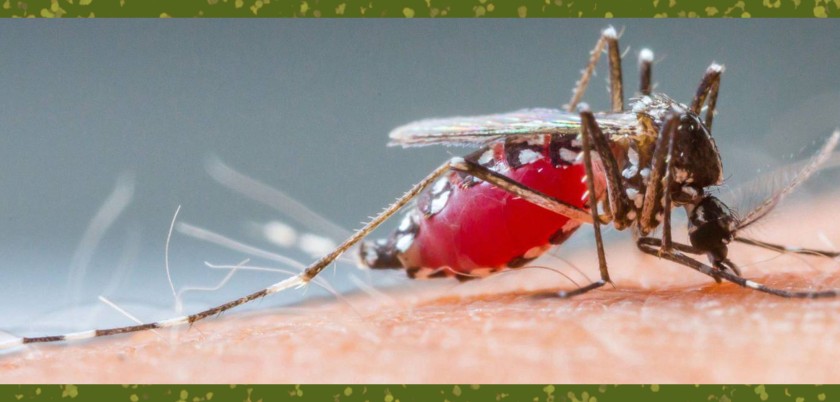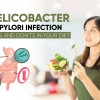
ANY CLUE ABOUT ROLE OF DIET IN DENGUE? READ OUT
Dengue is an acute viral infection caused by Dengue Viruses (DV) belonging to the family Flaviviridae. This infection is spread by the vector Aedes mosquito. It is also known as ‘break bone fever’ as the joint pains following dengue are too severe to handle! According to World Health Organisation (WHO), approximately 2.5 million people or two-fifths of the world’s population is now at risk of dengue. Dengue is now an epidemic in over 100 countries. WHO regards dengue as a global health threat.
The process begins when a mosquito bites a person who is infected with dengue virus; the virus is then passed on when the infected mosquito bites someone else.
Symptoms occur as a dengue triad: high fever, rash and severe headache. These begin 5-7 days after the mosquito bite. It is accompanied by severe joint pain too. Patients suffer with a lot of health complications such as loss of appetite, electrolyte losses and poor nutritional status.
No vaccine is available for the prevention of dengue infection. A lack of effective antiviral drug treatment makes the role of diet more important.
- Myth: Once you have encountered dengue, you will never get infected again.
- Fact: It is possible to get infected by dengue multiple times because virus causing dengue has 4 serotypes i.e. forms. Getting infected by one serotype only gives a lifetime immunity against that particular serotype, not the other three.
Diet therapy is very important in recovering from dengue, good nutritional status, increased appetite and increase RBC count and balanced electrolytes. A high protein, low fat, non-oily, non-spicy, soft diet is recommended. More frequent consumption of fluids vis-a-vis coconut water, fresh fruit juices (apple/orange/pomegranate/mix), lemon water, soups (spinach, beetroot, tomato etc.) is recommended. (Mishra S et al 2017)
NATURAL REMEDIES AGAINST DENGUE
THE PLATELET BOOSTERS
The lowered platelet count in dengue fever is due to dengue virus affecting the platelets and suppression of bone marrow to produce platelets. These are a few natural remedies to increase the platelet count:
The magic wand: ‘Papaya leaves’
Juice of the leaves of Carica papaya are a useful remedy in dengue fever.They are postulated to increase the platelet count. They prevent the breakdown of platelets. (Sarala N and Paknikar SS 2014)
The method to use them is taking out extract of leaves by crushing them and then consuming it or go for boiling the leaves in water and consuming that water.
Ahmad N et al (2011) recommended 25 ml of aqueous extract of Carica papaya leaves. Consumption rate was advised to be twice a day vis-a-vis morning and evening for five consecutive days to see the ‘magical’ effect.
2. Giloy: the magic herb
Giloy is a large shrub. It is a rare gem among herbs in the tropical region of India. The capsule developed from giloy is useful in the treatment of dengue. Ayurveda makes use of it. (Sarangi M K and Soni S 2013)
Giloy increases the number of blood platelets and alleviates symptoms of dengue fever as well. It is antipyretic, helping lower the temperature of body. (Rani et al 2017)
3. ‘Beetroot juice’ beats the low platelet count
Beetroot juice is a potent antioxidant that helps fight against disease. Add 2-3 tablespoons of beetroot juice in a glass of carrot juice and consume it 2-3 times a day. Platelet count boosts in 3-4 days. (Burungale S 2016)
4. Aid from Vitamin C
Vitamin C plays an important role to group together platelets and absorb more iron to increase platelet counts. Have a daily 2-3 servings of citrus fruits: kiwi, mango, pineapple, bell peppers etc.
5. Guava leaves need to be crowned
Guava fruit or its juice has shown to raise the levels of platelets. Also, its leaf extract has been shown to inhibit the dengue virus. Boil a few guava leaves in water and consume the water. It leads to the rise in declining platelet count. (Kadir S et al 2013)
(B) ANTIVIRALS
These are the substances that prevent the replication of virus, once it enters the body. This prevents the onset and worsening of infection.
‘Chinese ginger’ comes to rescue
‘Chinese ginger’ or ‘ginger root’ is a medicinal herb grown in the South-east Asia. It contains powerful phytochemicals called falvanones and chalcones. These inhibit the protease enzyme that is needed for the replication of dengue virus in the body. It’s a potent cure for dengue. (Kiat et al 2006)
2. Super power of ‘small eggplant’
This is a famous ingredient in the Southeast Asian cuisines. This is also commonly called as ‘chote baingan’. These contain ‘cyclotides’ which possess potency to inhibit the action of viral protease enzyme responsible for viral replication. (Gao et al 2011)
(C)ANTI-MOSQUITOES
These are those natural compounds which possess larvicidal properties for Aedes mosquito and they are the best pesticides. This is basically useful for vector control. They are also added to the skin lotions as a prevention method. You can use them by adding in infuser and spreading across the room.
The lovely ‘Pipli’
Pipli also called long pepper is a flowering vine, cultivated for its fruit, dried and used as spice and seasoning. It contains an active constituent ‘Piperine’. It has shown to possess larvicidal properties against the dengue vector Aedes. (Govindarajan et al 2008 ; Simas N K et al 2007)
The supernatural ‘Curry leaves’
‘Kari Pattah’ is used an aromatic ingredient in Indian cooking. It has been studied by extracting the components of its leaves and observing the larvicidal properties. The ‘acetone and petroleum ether’ extracts have shown to kill the larvae and pupae of Aedes egypti. (Arivoli and Samuel 2011, Nishan M and Subramanian P 2015 )
‘Neem leaves’ : bitter but sweet
Neem: a tree regarded as ‘sacred’ by our ancestors; it has been used since ancient times for its medicinal properties. It’s methanolic extract is a potent larvicide. (Margathavalli et al 2012, Nishan M and Subramanian P 2015 ) mix neem oil with coconut oil and apply all over the body to prevent insect bite.
4. The exotic ‘Turmeric’
This spice has long been used as a herbal remedy. Turmeric i.e. haldi contains ‘curcumin’ which has mosquitocidal properties against Aedes mosquito. (Roth et al 1998 ; Ichsyani M et al 2017)
5. The glory of ‘aloe vera’
Aloe vera extract is used as a powerful traditional medicine. It is a powerful larvicidal against Aedes.
(D) MOSQUITO-REPELLENTS
Herbaceous plants are generally resistant to insects and pests due to the presence of ‘volatile oils’ in them. These oils generally act as a powerful insecticide. This is the power of mosquito repellent leaves. Rub them on the skin or crush basil leaves in your garden or home to keep unwanted pests at bay! These plants wherever grown, do not allow the mosquitoes to buzz around!
Magnestic Basil leaves
The holy basil’s extract is used as a repellent against Aedes mosquito. (Farindira R 2015)
The enchanting clove
Clove or laung also contains volatile oils which show the repellent action against Aedes. This is due to the presence of ‘eugenol’ in cloves.
The final word
Dengue is the most important emerging viral disease of humans that in recent decades has become a major international public health concern. Till date, there is no licensed drug or vaccine available in the market. This creates a wider picture for natural sources having mosquitocidal/antiviral/ mosquito-repellent properties to effectively control dengue.






